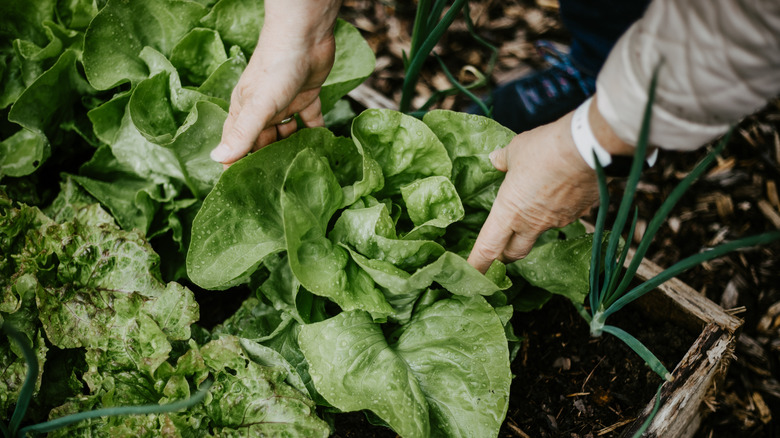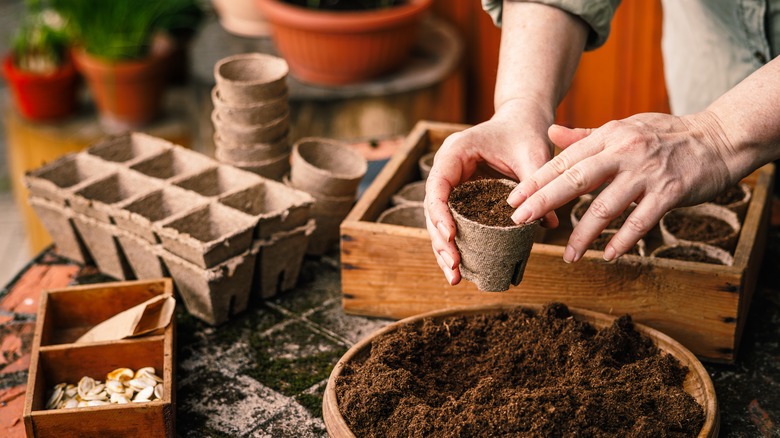Boost Your Harvest With This Effective Space-Saving Gardening Hack
Do you wish your garden could grow more, but you're limited on space? You're not alone. For most gardeners, space is usually at a premium, especially when working with a patio garden, a small backyard, or a kitchen garden. But you should not let space limitations destroy your dreams of having a bountiful harvest. Sure, there are gardening hacks that can help you take advantage of a small space. However, not every homeowner has the budget, time, or tools to DIY trellises for their vegetable garden.
Luckily, if you have limited space and want to grow more crops without the hassle of creating a vertical garden, you'll find immense value in multisowing. Think of it as companion planting, but here, you sow several seeds of the same plant in one cell of a seed starter or plug tray. Instead of thinning out the seedlings, you will transplant them into your garden as clumps. In the end, you'll produce more food without needing a full-blown homestead by growing multiple plants in the same space you'd usually grow just one.
Harness the power of multisowing with these simple steps
Multisowing can seem a little bit tricky at first, but it's the easiest gardening hack that will give you an instant green thumb. After all, this hack does not require perfect timing or spacing. To get started, you'll need seeds — think plants that grow best in clumps, like beets, radishes, and even onions. Plant several seeds together in each cell of a seed starter or plug tray. Plants like salad onions that don't require too much space can be sown in larger groups of eight per cell, while others like peas should be kept to two or three seeds per cell. You'll also want to use small, fast-growing crops that won't compete for space (say carrots and radishes).
However, make sure that you don't bury the seeds too deep when sowing them. Instead, cover them with a thin layer of potting soil, almost the same depth as the seed itself, as you don't want the seeds to compete too hard to reach the surface. Also, water them gently and regularly, ensuring the soil is moist but not soggy. Keep in mind that crowded seedlings are at a higher risk of fungal disease, so airflow is key. And while it's okay to let the entire clump grow, you might consider thinning out weaker seedlings if the roots start to tangle and the spacing gets too tight or harvest the largest ones while creating room for the rest to continue growing.

